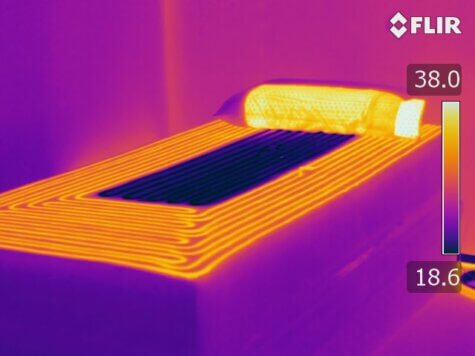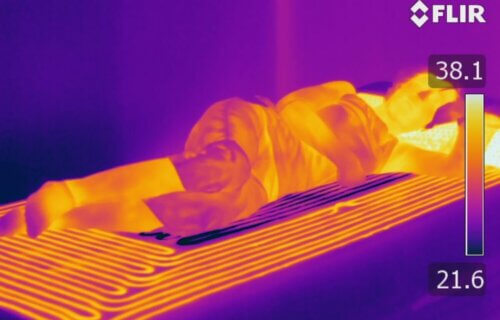AUSTIN, Texas — Sleep is an increasingly elusive commodity for many nowadays, but what if the right mattress could help? Bioengineers at the University of Texas, Austin have engineered a new type of mattress that “tricks” the body into falling asleep faster.
Our body temperature influences how awake or sleepy we feel at any given moment. For instance, it’s healthier to sleep in the evening as body temperature declines. So, the research team developed an innovative mattress and pillow system that uses both heating and cooling to send a message to the body: Time to sleep!
Study authors say their new mattress successfully triggers sleepiness, subsequently shortening sleep onset time and improving overall sleep quality.
“We facilitate the readiness to fall asleep by manipulating internal body temperature-sensitive sensors to briefly adjust the thermostat of the body so it thinks the temperature is higher than it actually is,” says Shahab Haghayegh, a research fellow at Harvard Medical School’s Division of Sleep Medicine and Brigham and Women’s Hospital, in a university release.
Haghayegh helped lead the development of the mattress at UT Austin while earning a Ph.D. in biomedical engineering.
The neck is a key sleep thermometer
The skin on our necks is a particularly important bodily thermostat, so that’s exactly where the mattress’ primary sensor targets — using a warming pillow. The mattress is capable of simultaneously cooling the central areas of the body while also heating up a person’s neck, hands, and feet. This leads to an increase in blood flow which dissipates body heat.

The research team’s recently published proof-of-concept study — detailing their unique combination warming pillow plus cooling-warming, dual-zone mattress system — actually describes two distinct versions of the mattress. One uses water to manipulate the core body temperature and another uses air. Researchers tested the mattress using 11 volunteers. Each person had to go to bed two hours earlier than they normally would. On some nights, the experiment used the mattress’s cooling-warming functions, while other nights did not.
Sure enough, the warming and the cooling-warming mattress helped participants start snoozing faster – roughly 58 percent faster than nights when they did not use the cooling-warming function. Researchers say lowering internal body temperature appears to promote a shorter sleep onset time and improved overall sleep quality.
Good sleep is ‘highly important for long-term health’
This invention is actually part of an even larger project in the lab of Kenneth Diller, a professor in the Cockrell School of Engineering and an expert in heat and temperature regulation for therapeutic devices. Prof. Diller has been trying to find new ways to use thermal stimulation to help improve people’s sleep.
One study in 2019 found taking a warm bath an hour or two before bed helps people fall asleep faster and leads to a better quality sleep. This mattress project follows the same principles, but adheres to a more targeted approach.
“It is remarkable how effective gentle warming along the cervical spine is in sending a signal to the body to increase blood flow to the hands and feet to lower the core temperature and precipitate sleep onset,” Prof. Diller adds. “This same effect also enables the blood pressure to fall slightly overnight, with the benefit of allowing the cardiovascular system to recover from the stress of maintaining blood flow during daily activities, which is highly important for long-term health.”
The research team already has a patent for the cooling-warming mattress and pillow technology, and is even looking for potential partnerships with mattress companies.
The study is published in the Journal of Sleep Research.


I could’ve used this mattress when I was younger. Now if they could just come up with a mattress that helped you stay asleep, and get back to sleep.